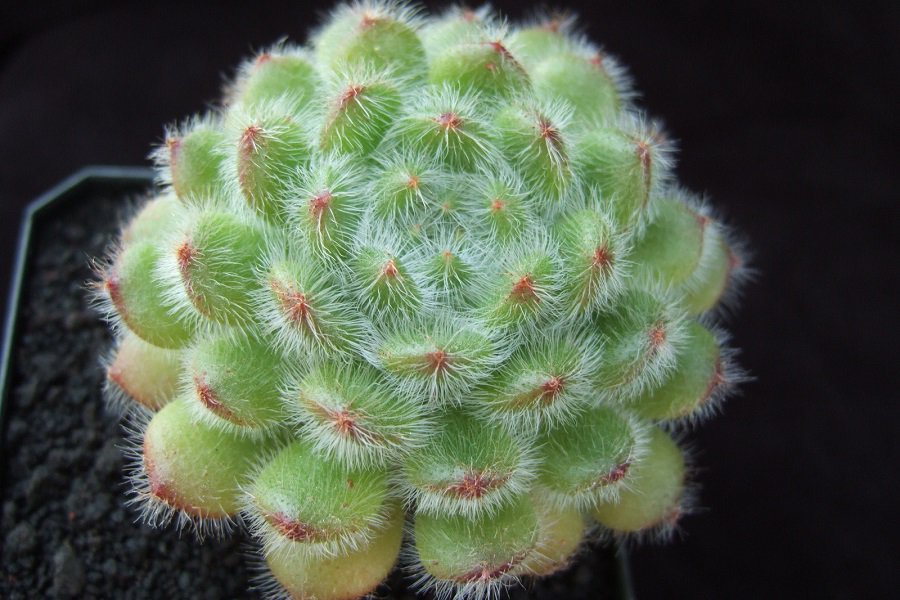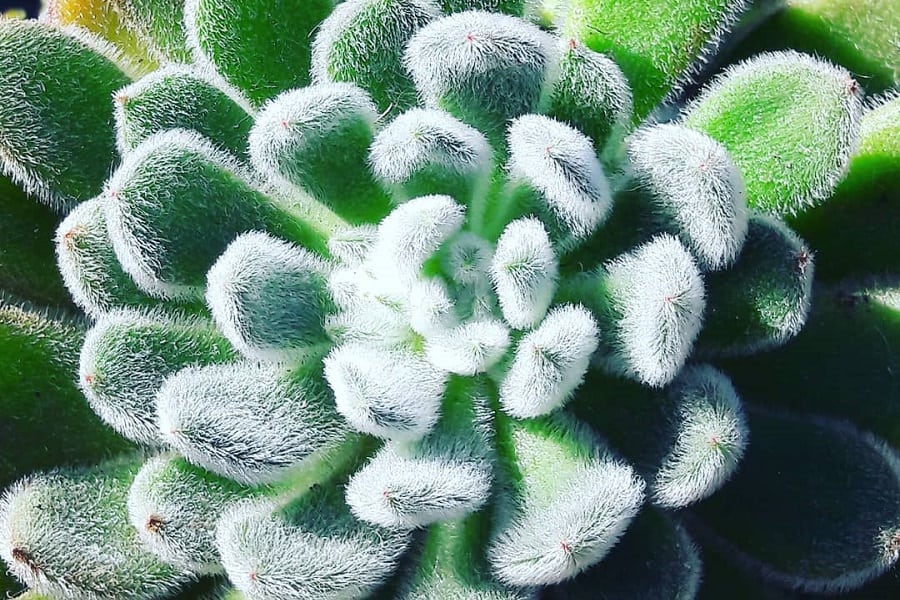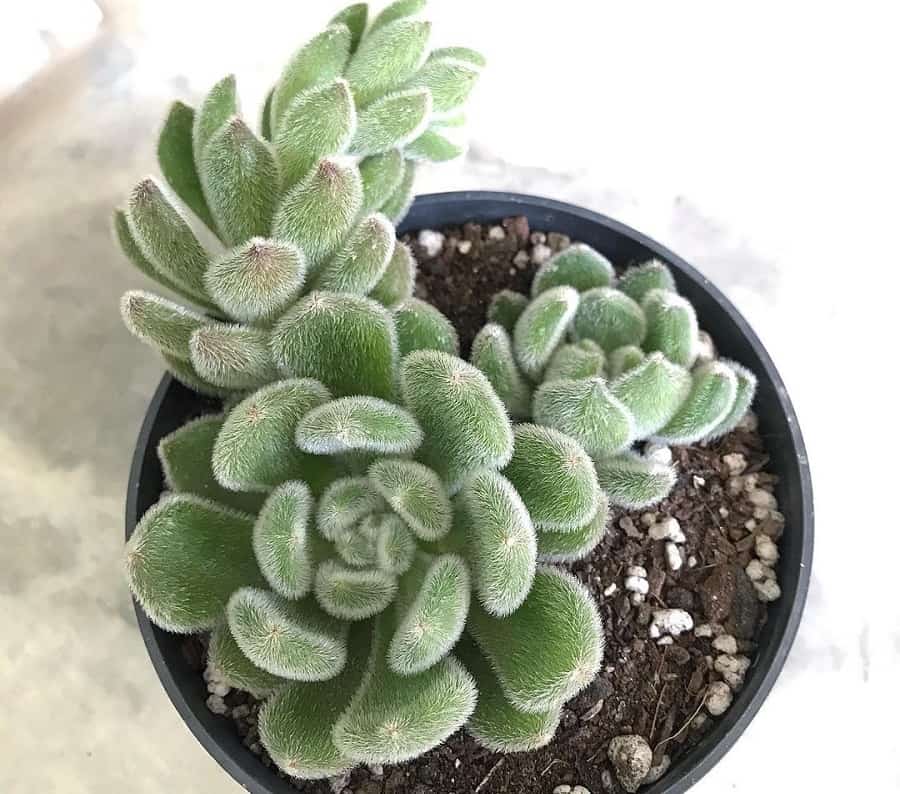Echeveria setosa 101: Care and Propagation Simplified
Get ready to learn about one of the coolest succulents around – the Echeveria setosa! With its fuzzy leaves and striking red and yellow flowers, this little plant packs a serious punch of beauty.
First off, the Echeveria setosa grows in a thick rosette shape, reaching about 3 inches tall and 1 foot wide when fully grown. The fleshy green leaves are coated in a fine white fuzz, giving them an almost velvety texture. But the real showstopper comes in spring when bright yellow and red blooms appear!

Related Post:
160+ Amazing Echeveria Types with Pictures
Now let’s talk care tips so you can keep your Mexican Firecracker thriving
Contents
Echeveria setosa Care Guide
Light
The Echeveria setosa absolutely craves lots of bright sunshine. Outdoors, it needs at least 4-5 hours of direct light daily. A spot with morning sun and afternoon shade is perfect. Indoors, place it in a south or west-facing window for maximum light exposure. Rotate the pot every week to ensure all sides receive adequate lighting. If you don’t get enough natural light, use a grow light positioned 6-12 inches away for 12-14 hours per day.
Water
This succulent stores water in its plump leaves, so it doesn’t need frequent watering. Only water once the soil is completely dry, then soak it thoroughly until water drains from the drainage holes. In spring and summer, you’ll likely need to water every 7-10 days. Cut back to every 3-4 weeks in winter when growth is minimal. Always water the soil directly and avoid getting moisture in the rosette center.

Soil
A gritty, well-draining cactus/succulent potting mix is essential. Regular potting soil retains too much moisture. Make your own by mixing 1 part potting soil with 1 part perlite or coarse sand. Pots must have drainage holes to prevent soggy soil and root rot.
Temperature
Warm temperatures of 65-80°F in spring/summer mimic this plant’s native Mexican climate. In winter, it can tolerate cooler temps around 50-65°F, but no lower. Avoid cold drafts. High humidity promotes rot, so keep levels around 40% if growing indoors.
Fertilizing
The Echeveria setosa is accustomed to nutrient-poor soils, so too much fertilizer can damage its roots. If desired, use an cactus/succulent fertilizer diluted to 1/4 strength. Only feed every 4-6 weeks from spring through summer during active growth periods.
Potting and Repotting

When potting or repotting, choose a container just slightly larger than the plant’s root system. Succulents prefer being root-bound to staying overly moist. Terra cotta or unglazed ceramic pots are ideal for allowing excess moisture to evaporate. Always use a well-draining cactus/succulent potting mix.
Only repot your Mexican Firecracker plant every 2-3 years max. Repot in late spring before its main growth period. Gently remove the plant from its current pot and re-plant at the same soil level in fresh, dry potting mix.
Propagation
One of the coolest things about the Echeveria setosa is how easy it is to propagate and multiply your collection! You can create new plants from individual leaves, offsets, or seeds. Here’s how:
Leaf Propagation
- Gently twist or cut a mature, healthy leaf from the mother plant’s stem. Allow it to callous over for 3-5 days before replanting.
- Fill a shallow tray or pot with well-draining cactus/succulent soil.
- Place the calloused leaf on top of the soil and lightly cover the end that was attached to the stem.
- Water sparingly, ensuring the soil never stays soggy.
- In a few weeks, roots and a tiny rosette will sprout from the leaf!
Offset Division
- Look for the tiny offsets or “pups” clustered around the base of the mother plant.
- Unpot the plant and gently pull or cut the offsets off the main stem, ensuring each has its own root system.
- Allow the offsets to dry for 2-3 days before replanting in fresh soil.
- Water sparingly after roots have established in a few weeks.
With a little patience, you’ll have a whole firecracker patch in no time! Let me know if you need any other tips for this eye-catching succulent.
